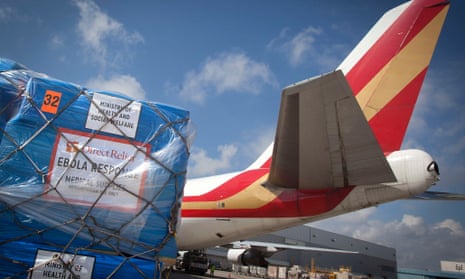Aid spending by the world’s richest states hovered around an all-time high last year, but development assistance to the least-developed countries (LDCs) fell by 16% from the year before, the Organisation for Economic Cooperation and Development (OECD) has said.
Member states of the OECD’s Development Assistance Committee (DAC) spent more than $135bn (£90bn) on official development assistance (ODA) last year, a 0.5% decrease from 2013, when a record amount of development aid was sent, according to the OECD.
Huge debt relief to Burma was behind much of the fall in aid to LDCs, the OECD said in its annual report (pdf). But excluding this relief, aid flows to the world’s poorest countries still fell by 8% as donors favoured loans to middle-income states, the OECD said.
Last year the world’s largest aid donors by volume were the US, the UK, Germany, France and Japan, the data showed.
Denmark, Luxembourg, Norway, Sweden and the UK spent more than 0.7% of their gross national income (GNI) on ODA, exceeding the UN’s suggested level of aid spending for rich countries. Last month, the UK became the first country to enshrine in law its commitment to spending 0.7% of GNI on overseas aid.
This article includes content hosted on d26adhsj11a4c2.cloudfront.net. We ask for your permission before anything is loaded, as the provider may be using cookies and other technologies. To view this content, click 'Allow and continue'.
“I am encouraged to see that development aid remains at a historic high at a time when donor countries are still emerging from the toughest economic crisis of our lifetime,” said the OECD secretary general, José Ángel Gurría.
Crises such as the Ebola outbreak in west Africa and mass displacement in Central African Republic, South Sudan and Syria triggered a 22% rise in humanitarian spending among the DAC’s 28 member countries, which spent $13bn in that area last year, the OECD said.
Sub-Saharan African countries received $36bn in ODA last year, the most of any region, according to the OECD’s preliminary estimates. South and central Asia received $21bn, making it the second-most funded region.
Last year Finland, Germany, Sweden and Switzerland showed the biggest rise in aid flows, while development spending by Australia, Canada, France, Japan, Poland, Portugal and Spain fell the most, the data showed.
“ODA remains crucial for the poorest countries and we must reverse the trend of declining aid to the least-developed countries. OECD ministers recently committed to provide more development assistance to the countries most in need. Now we must make sure we deliver on that commitment,” said Erik Solheim, the DAC chair.
The DAC’s total aid spending has increased by 66% since 2000. But aid flows to LDCs, which comprises two-thirds of their external finance, must be increased, the OECD said.
“The decline in ODA to LDCs is something that we’ve been worried about for a couple of years,” said Yasmin Ahmad, database manager at DAC, noting that the group has incentivised more lending to the poorest countries.
The DAC said in December that it would target more assistance to LDCs and other vulnerable nations. It said it would change the way concessional loans are calculated and reported to offer donors more credit for aid that is sent to the poorest countries.
“The share of total development assistance invested in the poorest countries is at its lowest level since 2005, when world leaders gathered in Gleneagles and made historic pledges to end extreme poverty,” said Adrian Lovett, the ONE campaign’s Europe director, who urged donors to send at least 50% of their aid to LDCs.
Some donors, such as the UK’s Department for International Development, have come under fire for ramping up spending on fragile states without proper monitoring or safeguards against corruption.
But the DAC said peer reviews of the aid spending by DAC member countries are conducted every four to five years. “We examine the policies and programmes of DAC donor countries to see what the positive aspects are that other countries can implement and what can be improved,” Ahmad said.
Aid spending has targeted good governance and improved health and education since the adoption of the millennium development goals, according to Ahmad.
The report projects a slight increase in aid spending up to 2018 as rich countries continue to emerge from the financial crisis.
Gurría said: “Our challenge as we finalise post-2015 development goals this year will be to find ways to get more of this aid to the countries that need it most and to ensure we are getting as much as we can out of every dollar spent.”
The donor community is gearing up for the UN’s Financing for Development conference in Addis Ababa in July, which will need to address funding for the sustainable development goals (SDGs), scheduled to be introduced at the end of the year.
Ahmad said preliminary estimates indicate that the SDGs could cost up to $4tn a year, meaning that more funding will need to be generated.
“If every donor met the 0.7% target, we’d be nowhere near that sum, so ODA cannot be seen as one of the only sources for inputting into the SDGs, there will be a wide variety of actors involved in that,” she said. “There is no way that public funds can be assumed to meet the SDGs.”

Comments (…)
Sign in or create your Guardian account to join the discussion